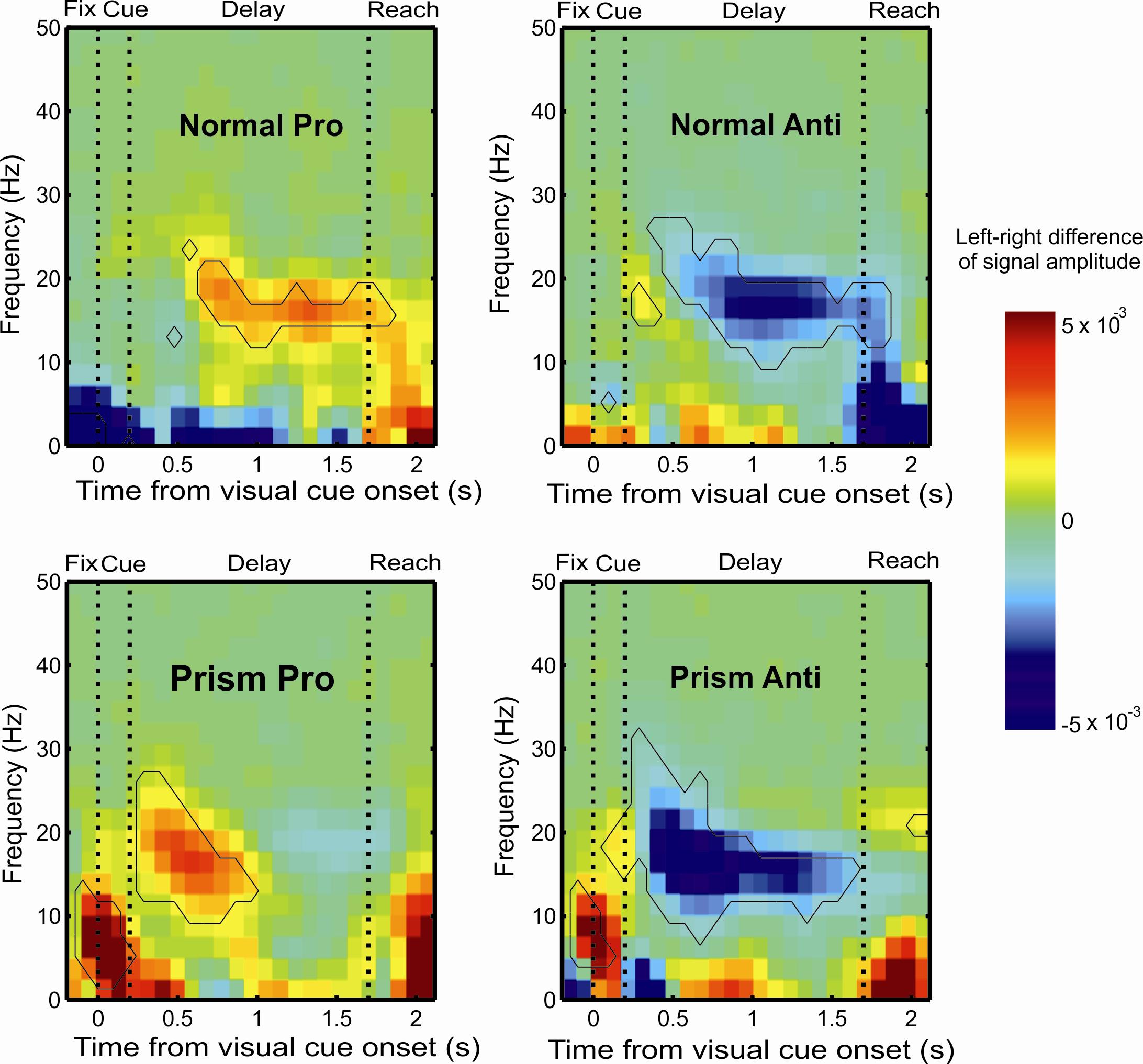Neurons in the posterior parietal cortex respond selectively for spatial parameters of planned goal-directed movements. Yet, it is still unclear which aspects of the movement the neurons encode: the spatial parameters of the upcoming physical movement (physical goal), or the upcoming visual limb movement (visual goal). Physical goal encoding would imply that motor goal signals are signatures of physical motor preparation. In contrast, visual goal encoding could implicate that action planning does not reflect the future physical motor execution per se, but rather the visual aspect of the upcoming movement kinematics. While physical and visual goals mark two distinct aspects of action planning, the visual and physical movement parameters in an everyday scenario are normally congruent. To test this, we recorded neuronal activity from the parietal reach region while monkeys planned reaches under either normal or prism-reversed viewing conditions. We found predominant encoding of physical goals while fewer neurons were selective for visual goals during planning (Fig. 1). In contrast, local field potentials recorded in the same brain region exhibited predominant visual goal encoding, similar to previous imaging data from humans (Fig. 2). The visual goal encoding in individual neurons was neither related to immediate visual input nor to visual memory, but to the future visual movement. Our finding suggests that action planning in parietal cortex is not exclusively a precursor of impending physical movements, as reflected by the predominant physical goal encoding, but also contains spatial kinematic parameters of upcoming visual movement, as reflected by co-existing visual goal encoding in neuronal spiking. 
Figure 1: Co-existence of visual goal and physical goal selectivity during planning. (A) Example neurons with physical goal encoding (left) and visual goal encoding (right). (B) Classification of physical goal and visual goal neurons across neuronal populations. 
Figure 2: LFP signals reflect visual goal encoding in a limited temporal and frequency range. Each panel shows the time-frequency diagram of the difference in LFP amplitude between left-cued and right-cued trials. Black outlines mark the boundary of time-frequency bins where directional selectivity was statistically significant.
The co-existence of visual and physical goals adds a complementary perspective to the current understanding of parietal spatial computations in primates. The visual goal neurons observed in our experiment highlight the visual sensory aspect of planned hand movement, independent of preceding visual cue instruction or visual memory. They shed a new light on the concept of motor goal, suggesting that the formation of a motor goal implies not just the preparation of a proper physical motor command and its representation in different spatial reference frames, but also the visuospatial aspects of the future movement. Besides, our findings of distinct encoding properties by single unit activity and LFP data, recorded simultaneously within the same brain area under the same task condition, calls for caution when comparing single neuron spiking activity with electrophysiological or hemodynamic mass signals. This research was supported by the Scientific Foundation of Institute of Psychology, Chinese Academy of Sciences (No.Y3CX112005). The work is now published online in the journal Cerebral Cortex. |
